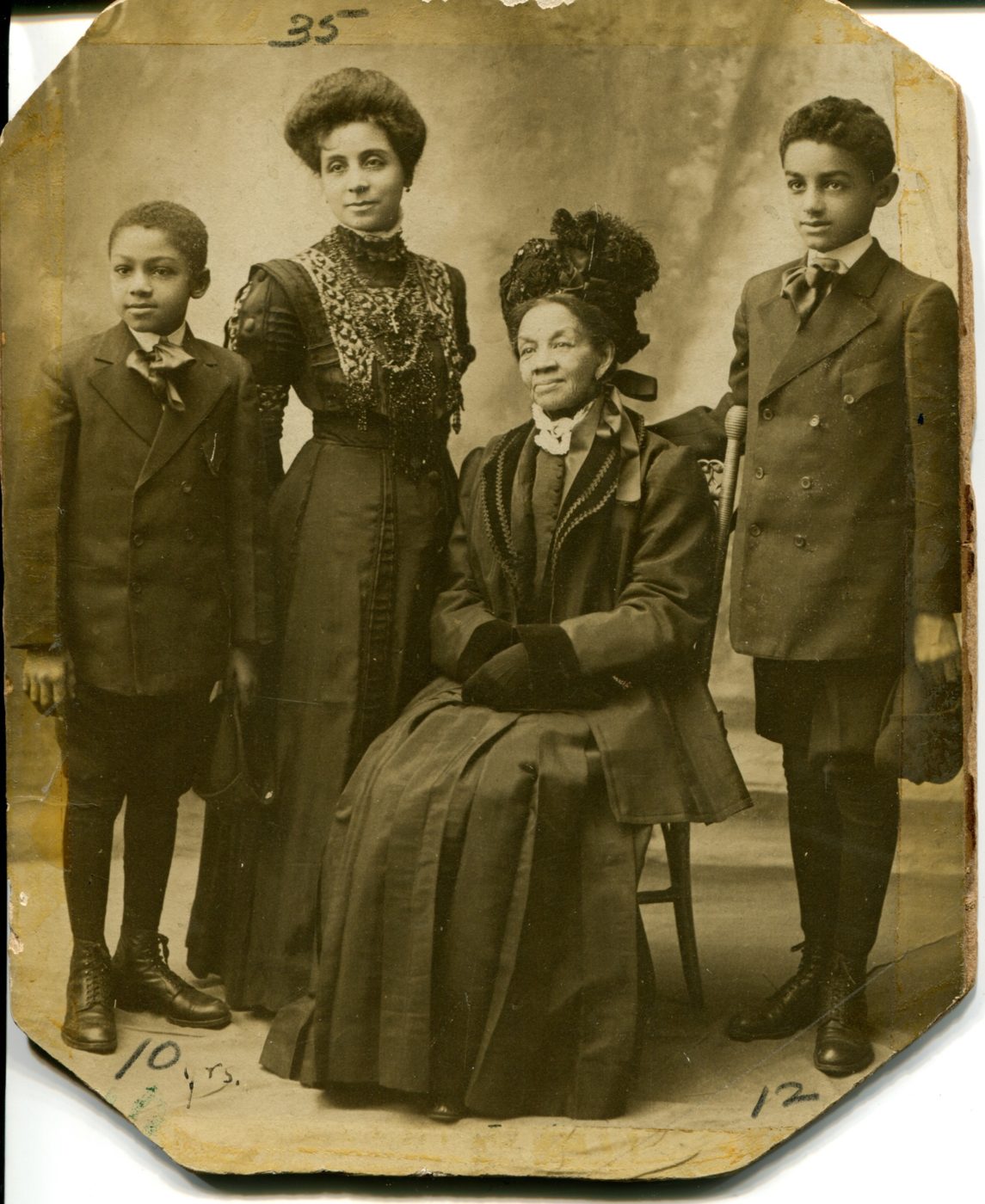Why Aren’t These Landmarked? Black History Month Edition
This post is part of our blog series Why Isn’t This Landmarked?, where we look at buildings in our area we’re fighting to protect that are worthy of landmark designation but somehow aren’t landmarked.
Greenwich Village, the East Village, and NoHo are rich with sites that have played invaluable roles in New York City’s and the nation’s Black history. Too many of these buildings have yet to be protected by landmark designation, despite the Landmarks Preservation Commission’s “Equity Framework” for considering designations that would better represent the full spectrum of our city’s diverse communities and backgrounds. Several of these historic structures are endangered and all have been proposed for landmark designation by Village Preservation, but the City has so far failed to act.
50 West 13th Street

Behind the yellow and green brick facade at 50 West 13th Street, an 1846 row house located between Fifth and Sixth Avenues, is a structure essential to our civil rights history in the 19th century. Jacob Day, who owned and lived at 50 West 13th from 1858 to 1884, was one of New York’s most successful and prominent African American businessmen, a leading abolitionist, and a dedicated supporter of both the historic Abyssinian Baptist Church and the Freedmen’s Bank, both located nearby. (His son, Jacob Day, Jr., remained here until 1896.) He supported numerous abolitionist and African American causes and institutions while living here, including efforts to further self-determination, provide access to ballots, and prevent attempts to re-settle Black Americans in Africa. In his 1885 History of the Negro Race in America from 1619 to 1881 (vol. 2), author George Washington Williams cited Day alongside the prominent abolitionist and diplomat Dr. Henry Highland Garnet (also a Greenwich Village resident) as doing “much to elevate the Negro in self-respect and self-support.”

Dr. Garnet’s future wife Sarah Smith Tompkins Garnet lived here as well for about a decade, before the two were married in 1875. A trailblazing Black educator, suffragist, and civil rights leader, she was the first female African American school principal in the New York City public school system (a role that she very likely held while residing at 50 West 13th), founded the Brooklyn suffrage organization Equal Suffrage League, and was eventually named superintendent of suffrage for the National Association of Colored Women.
In the 20th century, the site became well known for its role in New York City theater history. In the 1960s it was home to the Afro-American Folkloric Troupe, which staged productions primarily for Black audiences here in the late 1960s through 1971. The actors involved would regularly perform the recorded words of Black poets and folklorists such as James Weldon Johnson, Gwendolyn Brooks, Langston Hughes, Zora Neale Hurston, and Leroi Jones. The 13th Street Repertory Company called the site home from 1972 through to almost the present day. The theater provided new acting opportunities for generations of stage neophytes of varying talents, including such then-young actors as Richard Dreyfuss and Chazz Palminteri.
285-287 East 3rd Street

In the East Village, the pair of 1837 Greek Revival houses at 285-287 East 3rd Street have yet to be landmarked. No. 285 had served as home for decades to poet and writer Steve Cannon (1935-2019), called “the keeper of the multicultural flame and flavor of downtown Bohemia” in the 1960s thanks to his literary magazine A Gathering of the Tribes and other projects. He was also a leading figure in the Umbra collective of African American writers, one of the first and most prominent post–civil rights Black literary groups, which also produced Umbra Magazine.
Cannon maintained an “open-door policy” at his home, which became a nexus for artists and poets to discuss, share, and display their works. He launched The Stoop workshop on his own stoop in the early 1990s, where poets could meet to recite works in progress, and was instrumental in establishing many of the Lower East Side and East Village’s renowned cultural institutions, such as the Charlie Parker Jazz Festival and the Howl Festival (he was the event’s poet laureate).
80 Fifth Avenue

Our proposed South of Union Square Historic District contains dozens of unprotected sites connected to African American history, including 80 Fifth Avenue (14th Street). The building served as headquarters for several social justice organizations including the International Workers Order, a pioneering force in the U.S. labor movement that took some incredibly powerful positions for civil rights.
From 1930 to 1954, the IWO fought relentlessly for racial equality, interracial solidarity, industrial unions, and social security programs to protect working-class people. The organization operated under the principle of “No Jim Crow in the IWO.” In the 1930s and 1940s, its African American members launched the Lincoln-Douglass Society, which championed civil rights and offered high-quality health insurance to its members who often faced discrimination from private insurance companies. The IWO supported campaigns such as the federal anti-lynching bill, the permanent Fair Employment Practices Committee, the integration of the armed forces, the elimination of Jim Crow segregation in public facilities, and the protection of Black voting rights; it also organized rallies in defense of the Scottsboro Boys, the nine Black teenagers who were falsely accused of rape and sentenced to death in 1931. Congressman Vito Marcantonio of East Harlem, who served as the IWO’s vice president, introduced legislation drafted by the organization to bar discrimination against Jewish, Italian, and Black individuals in war work.

The IWO also organized the Harlem Suitcase Theater, led by Thompson Patterson, which brought socially conscious theater to African American audiences across the nation during the Depression. Its debut production Don’t You Want to be Free? was written by Langston Hughes, whose poems had already been showcased in other IWO publications. The play featured actors Butterfly McQueen and Robert Earl Jones making their stage debuts.
